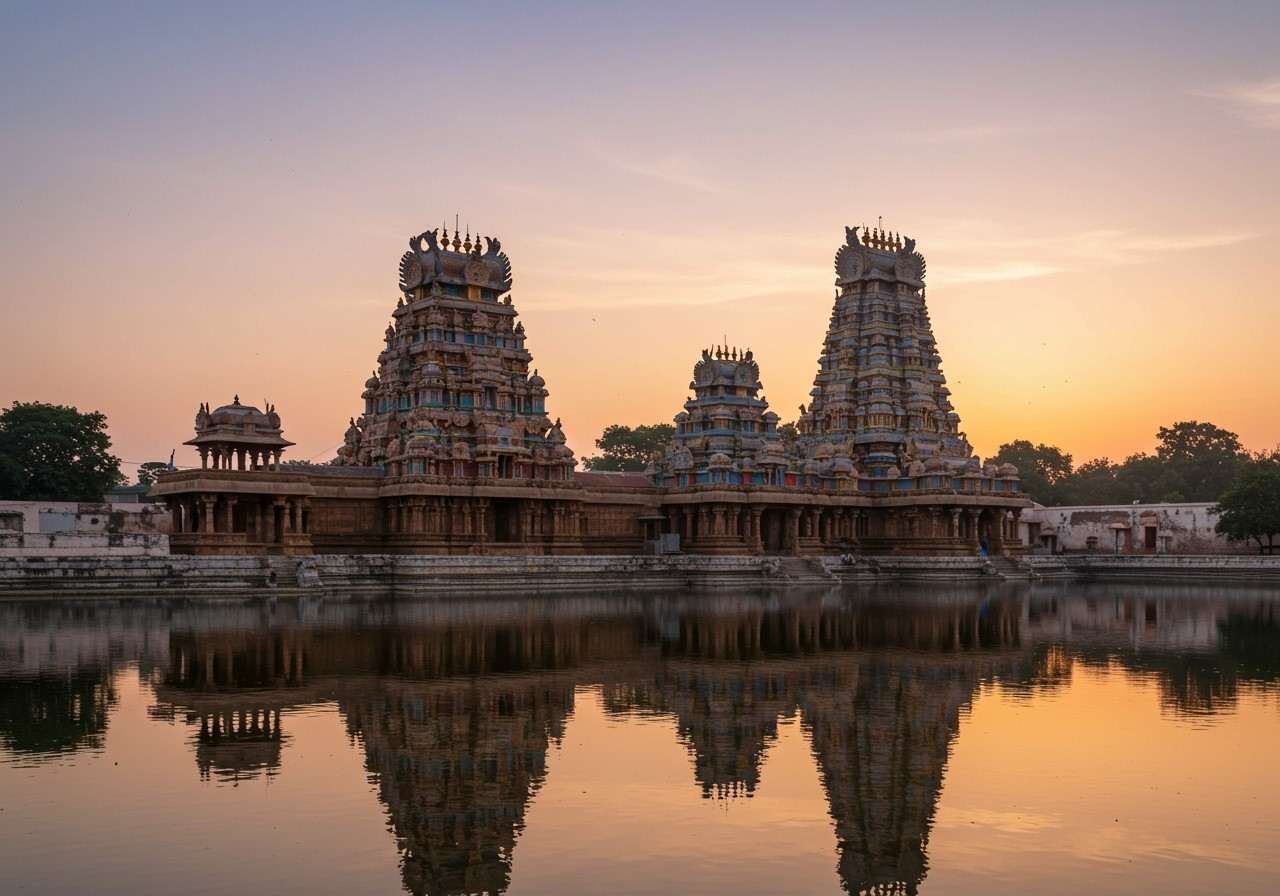
India, a land of vibrant traditions, boasts a rich tapestry of temples, each a testament to our profound spiritual heritage. These sacred spaces aren’t merely structures of stone and mortar; they are living embodiments of art, devotion, and the timeless wisdom of our ancestors. They serve as bridges between the human and the divine, inviting us to explore the intricate connections between the earthly and the celestial. For those seeking a deeper connection with their spiritual roots, exploring these architectural marvels is a journey of profound significance.
At poojn.in, we understand the deep-rooted reverence Indians hold for these sacred spaces. We believe in making authentic puja items accessible to everyone, enabling you to experience the divine in the comfort of your home. Whether you seek exquisite idols for your home temple or beautifully handcrafted puja chowkis, our extensive collection caters to every spiritual need.
Exploring the Essence of Sacred Architecture
Indian temple architecture stands as a testament to our ancestors’ deep understanding of the cosmos. They envisioned temples not just as places of worship but as microcosms of the universe itself, meticulously designed to reflect the cosmic order. Every element, from the grandest Gopuram to the smallest carving, is imbued with profound symbolism, whispering stories of devotion, mythology, and the eternal quest for truth.
Learn more about the significance of Hindu sacred architecture.
The Heart of Harmony: Sacred Geometry and Design
- Vastu Shastra and Shilpa Shastras: These ancient texts serve as the guiding principles for temple construction, emphasizing the importance of geometric proportions, symmetry, and alignment with cosmic energies. They provide a framework for creating spaces that resonate with spiritual harmony. Think of them as the ancient blueprints for building structures that connect us to the divine.
- Mandala: The layout of many Hindu temples often mirrors the mandala, a geometric representation of the universe. This intricate design serves as a blueprint for spiritual alignment, harmonizing the earthly and the divine. The square grid symbolizes knowledge and perfection, while the circle represents the human experience, beautifully intertwined.
- Sacred Geometry: The use of sacred geometry connects the physical structure of the temple to the cosmos. It embodies spiritual principles, creating a serene environment for worship and meditation. From the golden ratio to alignment with magnetic fields and astronomical positions, every detail is carefully considered.
- Fractal Geometry: The intricate details and repeating patterns within temple designs often reflect fractal geometry. This echoes the Hindu belief in a holonomic universe, where every part contains the essence of the whole. Just as a single drop of water reflects the vast ocean, each element of the temple reflects the grandeur of the cosmos.
Whispers of the Divine: Symbolism in Temple Architecture
- Garbhagriha: The innermost sanctum, known as the Garbhagriha, houses the main deity. It represents the heart of the temple, the very core of spiritual energy. The darkness within symbolizes the formless, infinite nature of the divine, a mystery that invites contemplation.
- Shikhara/Vimana: Towering above the Garbhagriha, the Shikhara (North India) or Vimana (South India) represents Mount Meru, the mythical axis of the universe. These majestic spires, built with mathematical precision and imbued with geometric symbolism, reach towards the heavens, connecting the earthly with the divine.
- Gopuram: The towering gateways, or Gopurams, mark the transition from the mundane to the sacred. Adorned with intricate carvings of deities and scenes from mythology, they symbolize the journey from the earthly realm to the divine.
- Deities and Idols: More than mere representations, the deities and idols within the temple are considered living embodiments of divine energy. Every posture, every weapon, every symbol carries deep meaning, inviting devotees to connect with the divine in a personal and profound way. At poojn.in, you can find a wide selection of beautifully crafted idols to enhance your spiritual practice.
- Pradakshina: The act of circumambulating the sanctum, known as Pradakshina, signifies the cyclical nature of life and the importance of moving in harmony with the cosmic order. It’s a symbolic journey, a reminder of our place within the grand scheme of existence.
- Symbolism of Elements: Hindu temples incorporate all elements of the cosmos—the good, the evil, and the human—symbolically representing dharma (righteousness), artha (prosperity), kama (desire), moksha (liberation), and karma (actions and consequences). They remind us of the complexities of life and the importance of striving for balance.
You can create a sacred space in your home with items like Gomti Chakra Pyramids and Dhoop Dhanis from Poojn.in.
The Spiritual Significance of Temple Architecture
Stepping into a Hindu temple is like stepping into a different world, a world imbued with sacred vibrations. These spiritual destinations are designed to uplift the soul and encourage inner reflection. They are places where we can connect with our inner selves, seek solace, and find inspiration on our spiritual journey. Enhance your spiritual experience with auspicious wall hangings from Poojn.in.
Discover more about the significance and symbolism embedded within Hindu temple architecture and explore how tradition meets modern design in Hindu architecture.
India’s temple architecture stands as a timeless testament to our rich cultural and spiritual heritage. These sacred spaces invite us to explore the profound connections between the human and the divine, reminding us of the eternal quest for truth, balance, and inner peace. Each visit is a journey through India’s rich past, an opportunity to connect with our roots and embrace the wisdom of our ancestors.


